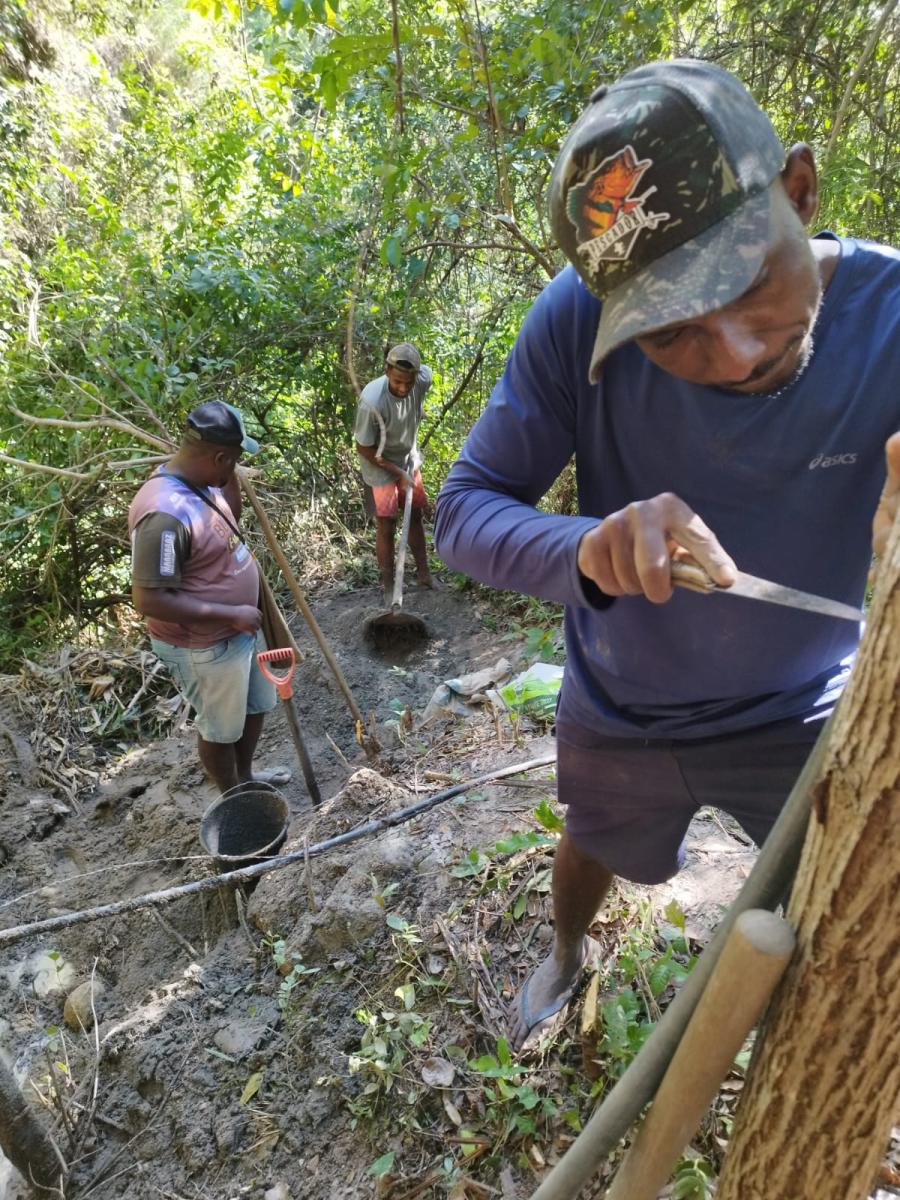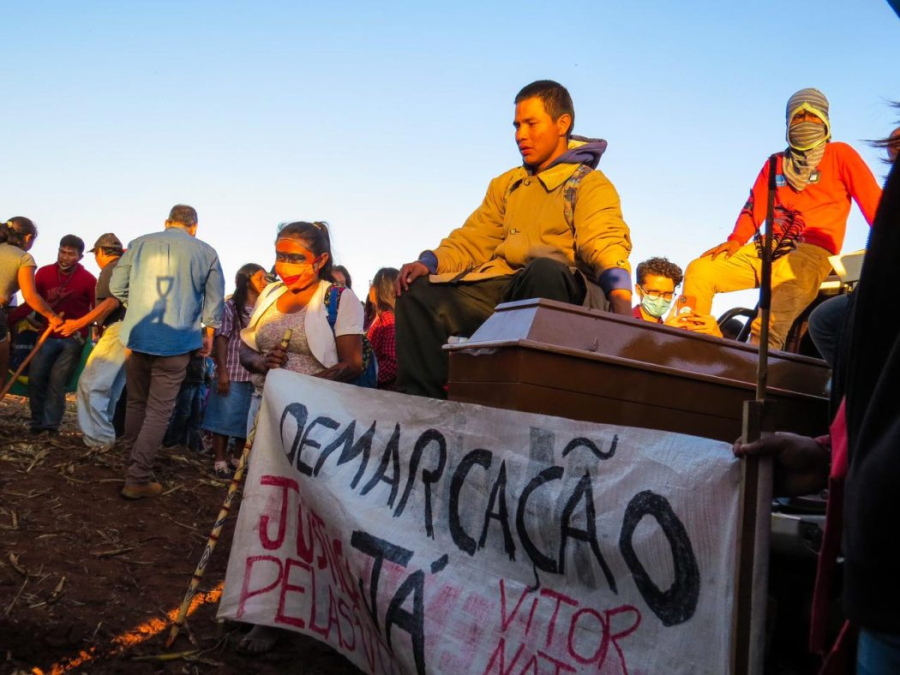In the past year Cultural Survival has worked with environmentalist organizations, notably the Natural Resources Defense Council and the World Wildlife Fund, in urging Congress to pay attention to the harmful social and environmental effects of many loans made by the large multilateral development banks (MDBs). In this connection I testified on September 18, 1985 before the Subcommittee on Foreign Operations of the Senate Committee on Appropriations, chaired by Senator Kasten. In my testimony I focused on the World Bank, not only because it is the most influential of the MDBs, but also because it is an institution that has gone on record as being concerned about the environment and the human rights of native peoples in areas being developed by its loans. In fact Cultural Survival played a leading part in the campaign to persuade the World Bank to take these issues seriously. We therefore welcomed the bank's publication of Economic Development and Tribal Peoples: Human and Ecologic Considerations and were encouraged by the subsequent news that the bank had adopted policy guidelines requiring it to protect both indigenous peoples and the environment from the adverse effects of its projects. But the policies advocated in the guidelines are, all too often, not put into practice. In the following, edited version of my testimony, I argue that the World Bank in particular and the MDBs in general ought to learn from past mistakes and seek in the future to promote development without ravaging the environment or trampling on the rights of native peoples.
Testimony
We are deeply concerned by the widespread assumption that the destruction of the way of life and the environment of peoples in areas targeted for development is one of the unavoidable costs of economic progress. Cultural Survival can, on the contrary, demonstrate that such destruction is in no way necessary and that it often serves to undermine development itself. We wish, therefore, to promote a wider understanding of this principle so that development programs may be planned and implemented for the benefit of peoples in the areas to be developed and not undertaken at their expense.
In recent years there have been indications that the MDBs might take indigenous and environmental issues more seriously into account. Cultural Survival welcomed the World Bank's publication. Economic Development and Tribal Peoples: Human and Ecologic Considerations, that dealt specifically and sensitively with these questions. Our organization was also encouraged to learn that the World Bank had adopted policy guidelines that required it to protect both indigenous peoples and the environment from the adverse effects of its projects. Indeed the World Bank's efforts on behalf of indigenous peoples in the area of the Polonoroeste project in Brazil have resulted in the lands of some Indian societies being demarcated and protected. Since then the Inter-American Development Bank has also indicated that it intends to be sensitive to the rights of indigenous peoples and to the needs of the environment as it undertakes the financing of the Brazilian Porto Velho-Rio Branco highway, which is essentially a continuation of the Polonoroeste project.
Nevertheless, there is still cause for grave concern. Not only is the past record of the MDBs in the areas of indigenous rights and environmental protection indefensible, but they continue to make similar mistakes, in spite of their policy documents and their assurances that they now take these issues seriously. The World Bank, for example, has had plenty of opportunity to learn from the difficulties of its past projects.
In the 1970s the bank made massive loans to promote rural development in the Philippines. Its strategy depended on the implementation of land reform, together with a nationwide program of rural credits designed to help small holders take part in the Green Revolution. At the same time it financed the construction of large dams to provide water for irrigation. But the Philippine authorities never carried out the land reform. Without it the rural credit system served merely to bankrupt farmers and impair the financial stability of rural banks. Meanwhile the irrigation projects produced similarly disastrous results. They uprooted small holders, poor Filipinos and tribal peoples (National Minorities) alike. These people were not properly resettled or compensated, because those aspects of the program were inadequately implemented, or not at all. Where resettlement did take place, the Ministry of Agrarian Reform made it impossibly difficult for the uprooted to gain title to their new lands. In the absence of such title they were ineligible for rural credit. The result of all this effort and of a decade of investment in Philippine rural development was the exact opposite of what had been the original planners' stated intentions. A consultant for the World Bank, writing in 1981, stated that the rural development strategies financed by the bank had failed to provide meaningful benefits for those rural Filipinos most in need of them. He added that the circumstances of most rural Filipinos were continuing to worsen and that the trend appeared to be irreversible. There is little doubt that this developmental disaster has contributed in large measure to the current economic and political instability of the Philippines. As a result of the Philippine program the World Bank has had a decade of experience with a government that did not implement the socially critical elements of bank-approved development strategies and whose relocation programs led to dispossession of tribal and non-tribal peoples, their impoverishment and the destruction of their ways of life.
Only a few years later the World Bank was contemplating the financing of large dams in India, where once again thousands of people were to be uprooted and relocated. Bank staff members and consultants warned that India did not have a good record where such relocations were concerned. Reports emanating from India itself made the same point. In The State of India's Environment: 1982 it was stated that the construction of dams had "effectively resulted in a direct assault on the country's tribal population," since the people uprooted were normally tribal populations or others who were relatively powerless within the political system. The same report went on to state that the treatment of the dispossessed was deteriorating over the years and that people uprooted by the most recent projects such as the Srisailam, Pong and Sabarnarekha dams or the Kali hydroelectric scheme had been "made into refugees in their own land." The World Bank decided nonetheless to finance dam construction in the Narmada river basin, a project that will inundate the ancestral lands of over a million people in 220 villages in the states of Gujarat, Madhya Pradesh and Maharashtra.
A project on this scale requires extraordinary care in the planning and monitoring of resettlement if it is not to turn into a gigantic human disaster. Yet the preliminary reports from the areas affected are not encouraging. The World Bank has laid down conditions for proper resettlement, including land-for-land compensation to avoid the notoriously pauperizing effect of the cash-f or-land systems used previously in India. Earlier this year, however, the state of Gujarat was insisting that it could not resettle tribal populations on government lands and was therefore compensating the earliest evacuees with cash. In many cases the people so compensated attempted to buy land elsewhere, but since they had little understanding of mortgages and land titles, they were cheated out of their money, ending up with neither lands nor funds. Meanwhile the agencies of the state government work consistently against the tribespeople. Its bureaucracy frustrates them and creates anomalies for them, such as giving them land holdings miles apart which they cannot properly supervise. It insists on distinguishing between lands that tribespeople have traditionally "owned" and those they have always worked and offering compensation only for the former, i.e., for a fraction of their holdings. Above all the state government has shown a callous disregard for the needs of communities, insisting instead on dealing with people as members of separate and separable households during the traumatic process of relocation. All this has created demonstrations of protest by the tribal peoples. This is taking place during the preliminary phases of the evacuation, before the huge relocations and inundations take place. It does not inspire optimism concerning the World Bank's ability to monitor and oversee a more equitable relocation program.
The record shows that, in spite of its sophisticated analyses and stated good intentions, the World Bank's implementation of measures to protect the rights of indigenous peoples affected by its projects is often too little and too late. The bank has, for example, been funding projects in Paraguay for two decades without making any provision for their impact on the Indians. When it decided that action on behalf of the Indians should be included in the provisions of a development project in the province of Caazapa, it took the bank three years to arrange for anthropologists to study the situation of the Mbya Indians who would be affected. In the meantime innumerable technical studies had been carried out and the bank had been discussing the project for years with the Paraguayans. As a result the Paraguayans had gone ahead with the paving of roads, the building of infrastructure and plans for settlement of new immigrants to the region. This had already caused a rise in land values, an influx of immigrants and considerable deforestation, before even the preliminary studies had been made concerning the measures necessary to protect the rights of the indigenous inhabitants of the area.
A similar imbalance was noticeable in the management of the Polonoroeste project. There the road work was finished ahead of schedule, producing the expected influx of migrants into northwestern Brazil, but measures to defend the Indians and the environment lagged catastrophically behind. The result was an environmental disaster and open and massive invasions of Indian lands, which have moreover benefited large enterprises and not the small holders which the project was originally supposed to assist. The problem, as in the Philippine case mentioned above, was that the Brazilian authorities systematically flouted the bank's directives about what should be done on behalf of the Indians. The Brazilian Indian service was partly unable and partly unwilling to do what the bank mandated. Its senior officials did not in any case believe that the World Bank was serious about Indian rights. One of them, who subsequently became the head of the Indian service, responded cynically to Brazilian Indianists who reminded him that the bank required Indian rights to be protected as a condition of the Polonoroeste loan. He told them that they should not put their faith in the World Bank, for it would not cut off the Polonoroeste funds to protect the Indians.
It is to the credit of the World Bank that it did insist and did achieve some successes on behalf of the Indians in northwest Brazil. It did in fact halt disbursements for a time on the loan, but by that time the road had been improved and the damage had been done. In fact, though the halting of disbursements was a welcome and salutory demonstration that the bank was serious about the conditions it had set for the loan, its practical effect at that stage was to hamper assistance to the Indians, that element of the program which had characteristically been left until last.
This is the heart of the problem. In the examples I have given we have seen again and again that the World Bank's stated intentions have been admirable, but they have not been matched by effective implementation of those parts of programs and projects that affect indigenous peoples or the environment. In the Philippines the bank's strategy was undermined by noncompliance on the part of the host government, yet the bank persevered for a decade in a policy that was counterproductive. It appears likely that the bitter and pauperizing consequences of bank-financed relocation that poor Filipinos and Philippine National Minorities experienced in the 1970s are now about to be suffered by a million poor and tribal people in the Narmada basin of India. In northwestern Brazil the bank once again financed a giant project with potentially disastrous human and environmental consequences without adequate staff or planning to enable it to mitigate those adverse effects. It was as powerless to deal with noncompliance on the part of the Brazilians as it had been in the Philippines, and appeared to have no strategy for dealing with such an eventuality. Meanwhile, in neighboring Paraguay, it is still following its conventional procedure of investing its staff time in economic and infrastructural studies, while paying scant and delayed attention to the human and environmental costs of the processes it has already set in motion even before the loan agreements are signed.
In view of these experiences, past and present, it is with dismay that we now learn that the World Bank has agreed to finance a massive transmigration program for the resettlement of Javanese and other Indonesians in West Irian, that part of New Guinea which is held by Indonesia. The potentials for a disaster of mammoth proportions are all present. Indonesia already has a poor record as regards conservation. The scale of deforestation in Kalimantan (Borneo) has provoked shock in Indonesia and throughout the world. At the same time there has been international concern over Indonesian treatment of the inhabitants of West Irian and East Timor, a territory seized by Indonesia when it ceased to be part of the Portuguese empire. Now the World Bank is financing a project where environmental degradation and mistreatment of the indigenous population of West Irian are both real possibilities, as the current flow of refugees out of the region goes to show. On the basis of past experience, it is difficult to have much faith in the bank's ability to control the adverse human and environmental effects of a project so large, so complex and so highly charged politically.
On the basis of its publications and policy guidelines the World Bank can claim with some justice to be one of the MDBs most sensitive to indigenous and environmental issues. We are concerned, nevertheless, because its deeds systematically differ from its words. We feel it is imperative for the World Bank to set an example for the MDBs by demonstrating its commitment to these issues in action. This can only be done by engaging qualified personnel to undertake human and environmental impact studies in good time, that is, at an early stage of loan negotiations. The bank should also maintain an adequate staff of specialists or specialist consultants to monitor human and environmental impact during the course of bank-financed activities. Finally, it should have clear contingency plans for halting disbursements in the case of non-compliance. The rights of the poor and the tribal peoples, which are so often infringed by bank-financed projects, are, like the needs of the environment, too important and too essential to proper development to be treated as an afterthought.
Conclusion
Since this testimony was delivered. Cultural Survival has made plans to work jointly with the Environmental Defense Fund in monitoring the effects of large MDB-financed development projects around the world. Up till now we have relied on a worldwide network of people who share our concerns to keep us informed about the effects of MDB loans. We are now applying for funds to expand this network and to enable us to keep in regular and systematic contact with its members. In this way we hope to obtain timely and immediate information about MDB activities. We shall then analyze and publish these data in a constant campaign to persuade the MDBs to take their responsibilities to the environment seriously and to make it a routine matter to see that the rights of indigenous peoples in areas affected by their loans are respected.
Article copyright Cultural Survival, Inc.



